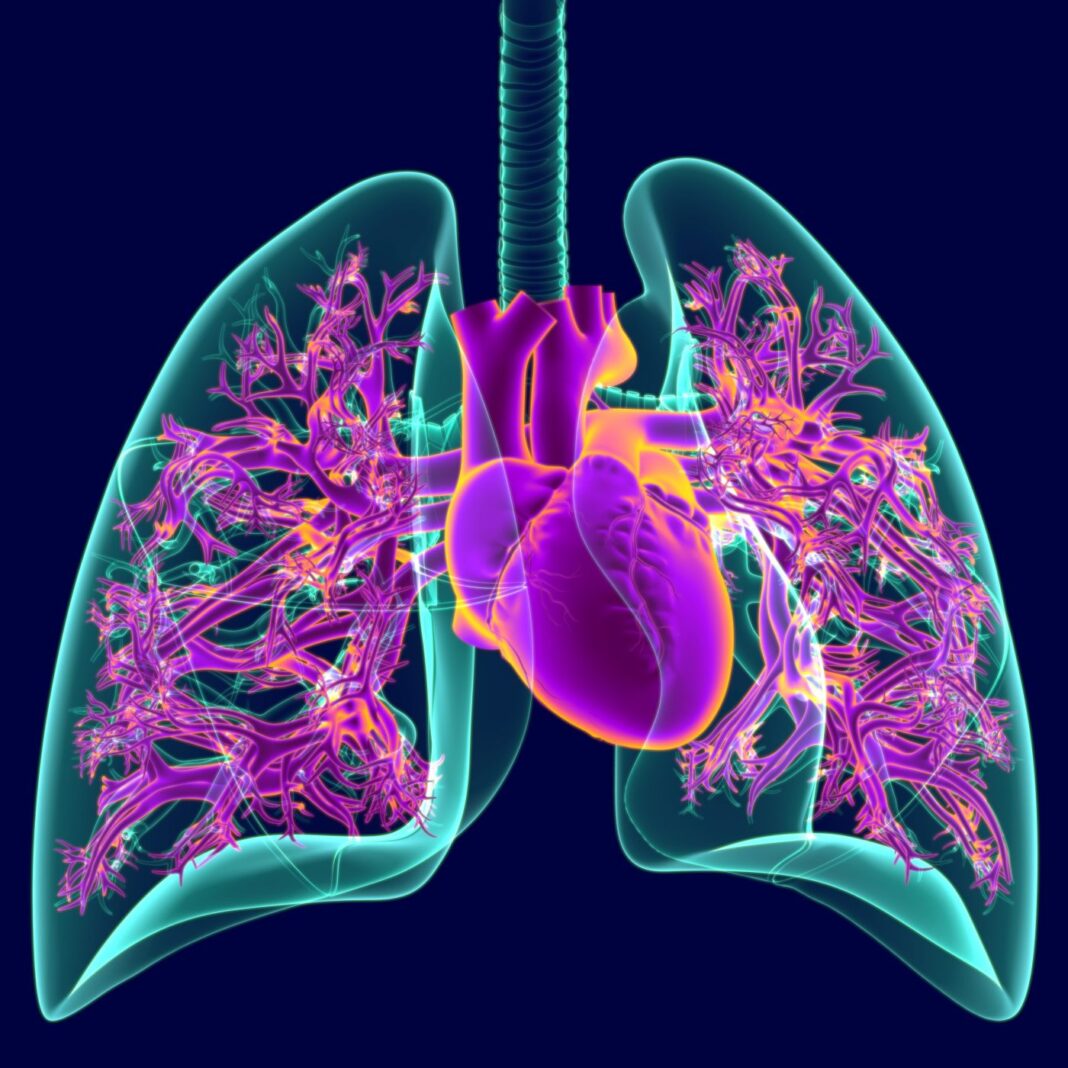Researchers from Brigham and Women’s Hospital report that allergic asthma and other associated allergies may be risk factors for cardiovascular disease (CVD) and how medications given to treat asthma may also influence risk of CVD. They published their study “Allergic Asthma is a risk factor for human cardiovascular diseases” in Nature Cardiovascular Research.
“Many people think of asthma as a disease of the lungs, but there’s an important link between asthma and cardiovascular diseases, such as coronary heart diseases, hypertension and more,” said corresponding author Guo-Ping Shi, ScD, a principal investigator in the Brigham’s Division of Cardiovascular Medicine. “I’ve studied this area for more than 20 years, and the evidence we see from clinical trials as well as basic research points to allergic asthma as an important risk factor that clinicians and patients need to be aware of when considering personal risk.”
Shi and his co-authors, including Peter Libby, MD, a renowned cardiovascular medicine specialist, and Bruce Levy, MD, chief of the Division of Pulmonary and Critical Care Medicine at the Brigham, describe clinical studies demonstrating the connection between asthma and diseases such as coronary heart diseases, aortic diseases, peripheral arterial diseases, stroke, heart failure and other cardiac complications. They also highlight clinical studies that have examined CVD and related allergic diseases, such as allergic rhinitis (allergies triggered by pollen and other environmental factors), atopic dermatitis (allergic eczema) and severe food and drug allergies.
“Observations from these studies suggest that allergic reactions besides asthma are also significant risk factors for CVD,” said Shi, who along with colleagues examined results from preclinical models and lab-based studies, which point to specific types of inflammatory cells that may accumulate in the lungs, heart, and vasculature, helping orchestrate asthma and CVD.
“Asthma is an allergic airway disease in which type 2-mediated inflammation has a pathogenic role. Cardiovascular diseases (CVDs) are type 1-dominant inflammatory diseases in which type 2 cytokines often have a protective role. However, clinical studies demonstrate that allergic asthma and associated allergies are essential risk factors for CVD, including coronary heart diseases, aortic diseases, peripheral arterial diseases, pulmonary embolism, right ventricular dysfunction, atrial fibrillation, cardiac hypertrophy and even hypertension,” write the investigators.
“Mast cells, eosinophils, inflammatory cytokines, and immunoglobulin (Ig)E accumulate in asthmatic lungs and in the injured heart and vasculature of patients with CVD. Clinical studies show that many anti-asthmatic therapies affect the risk of CVD. As such, allergic asthma and CVD may share common pathogenic mechanisms. Preclinical investigations indicate that anti-asthmatic drugs have therapeutic potential in certain CVDs.
“In this review, we discuss how asthma and allied allergic conditions may contribute to the prevalence, incidence, and progression of CVD and vice versa.”
Key findings
Both clinical and pre-clinical studies pointed to shared mechanisms for CVD and asthma. The authors looked at how asthma medications that act on some of these mechanisms might influence risk of CVD. They found that:
- Inhaled albuterol (commonly used as “rescue inhalers” to treat acute asthma attacks) seemed to reduce CVD risk.
- Oral and intravenous corticosteroids (such as prednisone) appeared to increase CVD risk, but inhaled corticosteroids (such as fluticasone propionate and budesonide) appeared to decrease CVD risk.
- Leukotriene modifiers (such as montelukast) had beneficial effects, reducing inflammation, blood lipid levels and cardiovascular events.
- Anti-asthma antibodies (such as omalizumab) had mixed results, with one study finding increased risk and others showing reduced risk or no effect on CVD.
Mast cells are among the common white blood cells that are activated by circulating IgE in patients with asthma or allergies. Shi and his research team reported on a series of studies over the decades that support the notion that mast cells and IgE are two important components to both allergic asthma and CVD with similar mechanisms.
Shi and colleagues also note that some cell types may play different roles in asthma and CVD. For instance, eosinophils—another type of white blood cell—appears to play a protective role in CVD but contributes to allergic asthma. Better understanding the roles of different cell types and the effects of targeting them could help refine treatment, disease management and risk assessment.
“Based on these previous studies, we can now ask: What is the next direction we need to pursue? What are the weakest points that we can focus on? By connecting work across basic research and clinical studies, we can start to see the bigger picture and think about the implications for patient care,” said Shi.



